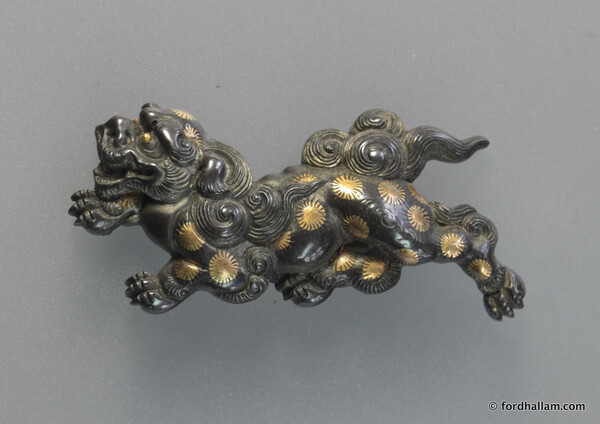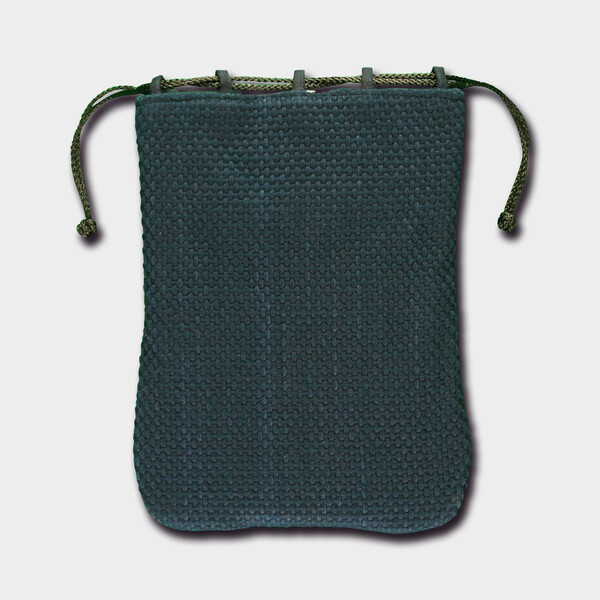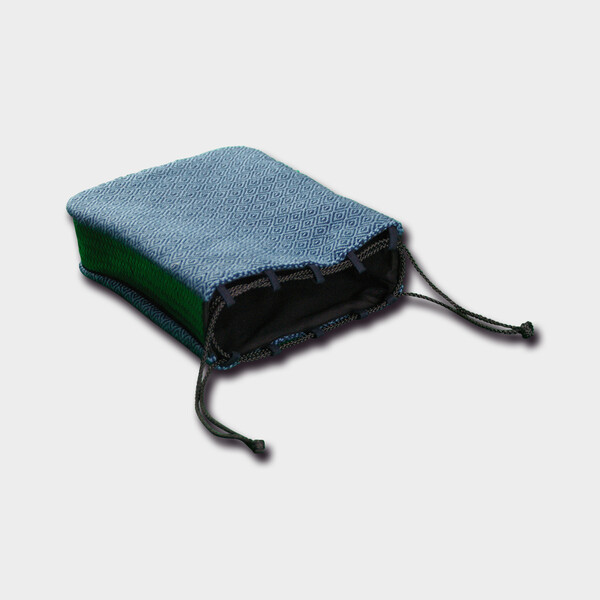-
Posts
3,091 -
Joined
-
Days Won
78
Content Type
Profiles
Forums
Events
Store
Downloads
Gallery
Everything posted by Ford Hallam
-

Wisdom of the crowd - which tsuba do you like the most?!
Ford Hallam replied to rkg's topic in Tosogu
Brian, if we look at the actual design lines on No4 it becomes clear that the shape we now see in some areas a bit reduced compared to where the flow of lines evidently was originally. What this shows is that the material has, over the years ,corroded away and that at some point in the distant past it was lovingly restored. The lumpiness is most likely due to uneven corrosion rather than any sort of unevenness in terms of the metals make up. I'm still not convinced that 'iron bones' are high carbon spots. -

Wisdom of the crowd - which tsuba do you like the most?!
Ford Hallam replied to rkg's topic in Tosogu
No 4 -
For what it's worth, in my opinion, I don't see any reason to regard this tsuba as cast. And while it may not be a masterpiece it seems to me to be a perfectly competent piece of work that additionally exhibits a number of crisp details that make it clear to my professional eyes that this is not a cast copy.
-
They look to be gold to me, but not Goto as the metal is too thin.
-
visually, no, the small addition of gold doesn't alter the copper colour enough to allow our eyes to see any difference. it is possible to tell, however, from the way the metal feels when scraping or polishing. The additions to the copper refine the copper crystal size so that it feels less 'gummy' and slightly more firm. Ancient high tin bronze is sometimes found that is a good glossy black but this wasn't a deliberate finish as far as can be ascertained but rather the result of the conditions the piece was stored or buried in. Also, these types of bronze are almost always castings and unlikely to be found in tosugu. Niello type alloys are only used as infill decoration and don't appear to have been used in Japan. By the early Meiji period a pseudo shakudo had been developed in Tokyo that contained no gold. The patina on that is a really good solid glossy black. It appears the patina was developed in a kiln and not by the usual boiling in copper salts. I've not seen this alloy used in tosogu though. And I've never come across any process that boiled metal in urushi though, that sounds alarming dangerous There is a little chemical test that I sometimes use to test for shakudo or copper on an unpainted piece but I'm not sure making that publicly available would be wise for fear of setting of a flood of DIY screw up repatination attempts.
-
The inlay work and waves look like Nara school work to me, specifically the Yasuchika group.
-
In my opinion this was a good learning experience. These are modern cast fakes. Now that the fake instant patina and very suspicious pitch from the back has been removed the truth is glaringly evident.
-
Daikon (possibly) hidden by a wooden spoon and chestnuts one the back, a culinary reference or possibly a pun.
-
Stephen, in laboratory tests this effect can be triggered in a matter of days but as I described there are a number of contributing factors, worst case scenarios are probably not helpful but from my own work as a restorer I would suggest there's no immediate panic required in terms of older pieces rather it would be a matter of improving our 'best practice' moving forward. If there's an ugly green staining visible, that's also a bit slimy, that's a good sign it needs dealing with pretty quickly.
-
Beeswax will break down to fatty acids also but microcrystalline wax like renaissance wax is apparently stable. It was developed at the British museum so I think it's fairly reliable and trusted in Professional circles.
-
It's correct that Ibota wax was traditionally used on tosogu. However we now know that this is not wise in the long run. "..Over time the wax will inevitably degrade due to the presence of atmospheric oxygen, moisture and ultra violet light resulting in a break down of their esters into their component fatty acids. This break down of the wax is greatly accelerated by the presence of copper. These organic fatty acids then react with copper or zinc (in brass) ions by a process known as saponification to form a corrosion product called copper or zinc soaps. The copper soaps appear as deep green surface encrustations whereas the zinc soaps are typically white. There is evidence to suggest that this process may in fact be further accelerated on patinated copper." The Technology of Japanese Art Metalwork - Metals, alloys and patination. A History and practical manual. by Ford Hallam
-
happy to help, Frank. In fact I may do a little film of this subject, it may be of interest.
-
Alex, these are not casting moulds. Rather they are actually impressions taken from finished pieces as a record of a studios productions. The material is a fine grained white clay. The darker models are also simply records of finished pieces. In this case a mould was taken, possibly with clay as above, and ward pitch (matsuyani) was pressed in to create the impressions.
-
As has been already demonstrated its self evidently true that there does exist in various forms a variety of so called ranking systems for tosogu artists is Japan. Putting aside, for a moment, any trade or commercial considerations and addressing solely the artistic and aesthetic question I would suggest that it's worth noting that nothing as simplistic as this sort of ranking system exists in the Western classical music tradition, or any other that I know of. Similarly an educated person would regard as puerile any attempt to rank the great painters of the past. A moments reflection on the reasons as to why we don't have league tables with Da Vinci, Rembrandt and van Gogh battling it out to be in the premier division illustrates just how subjective and artificial the Tosogu situation really is, and additionally completely muddies any meaningful appreciation of all of the many forms and styles of metal art within that tradition.
-
Hi Brian it is relatively straightforward to fit sekigane, perhaps not exactly easy. The casting technology being used today for small scale steel casting isn't particularly difficult to use so doesn't imply any specific metalworking skill and certainly not fine hand work abilities. So on balance my feeling is those additions do present a bit of a challenge to non-specialists, and even in Japan restoration in metalwork is very basic, in my opinion anyway. But it's that lovely authentic copper and shakudo patina, in situ in iron, that very very difficult to achieve.
-
Based on the close up Pete seems to be directing our attention to I'd suggest this is a cast copy. Note that the seki-ane on the nakago-ana and that on the kogai-hitsu are all apparently of the same metal as the body of the tsuba.
-
Hi David thanks for your considered reply. It's interesting that you cite Oguchi, I have issues with many of his conclusions and assertions but he does correctly identify nigurome as being the base alloy for making shakudo. He's wrong when he equates kuromido with nigurome and his suggestion that early shibuichi was made with nigurome is not supported by any evidence either literary or analytical. He also doesn't refer to any unrefined copper anywhere. This notion is simply wrong. And Yamagane, as bandied about in tosogu circles, wasn't ever a thing. Oguchi states that shakudo means black gold, this is not correct. It means red copper. And thereon hangs a tale. But I suppose what I'm saying is that seemingly scholarly papers like this are problematic as they are rarely subjected to critical assessment by anyone who might be qualified to do so.
-
Just curious, David, how do you know the base metal is an unrefined copper?
-
The first example is a variety of silver 'solder' simply melted and fused to the iron ground. The second is heavily corroded silver sheet nunome-zogan. Sahari, or sawari, is a champlevé type of decoration where a powdered metal composition is melted to fill a prepared cavity. Most of these alloys are basically 66% copper and 33% tin. The Hazama school were, of course, the most notable exponents.
-
I'd doubt the inlaid flowers are pewter, Being made of tin and lead, that alloy reacts very badly in the traditional non-ferrous patinating solutions in that it causes a flash plated copper halo around itself. As Stephen wrote, it's most likely patinated silver.
-

Very Interesting And Unique Kyo-Kinko Shishi Menuki
Ford Hallam replied to Blazeaglory's topic in Tosogu
For comparison these are by Yanagawa Naomitsu, a student of Yanagawa Naomasa, a leading student of Yokoya Somin Note the crisp engraving of the tails and the sharp outline of the inlaid gold spots. Also, the expressiveness of the faces. Base metal is shibuichi, which is really stiff under the hammer and punch, and probably why we see relatively few menuki in this alloy. -

Very Interesting And Unique Kyo-Kinko Shishi Menuki
Ford Hallam replied to Blazeaglory's topic in Tosogu
I can't quite make out what the papers say but to me these purport to be Yokoya school work. Having said that they don't look right to me. The first thing about them is the gold discs. On genuine work these are neat inlaid circles, here they're pretty poorly shaped which suggest to me they've been electroplated on. The circle having been outlined with some paint on resist before actual plating. And then the actual lack of real crispness in the detailing, especially the swirls in the tails, these are usually directly chiselled but here seem to have lost their sharp ridges. -
In my opinion there's no direct connection to Takeda Shigen and the style of tsuba thus named. Shingen died in 1573 and the Chinese only started producing metallic zinc, required to make brass consistently, during the following 25 or so years. Zinc wasn't produced in Japan until the start if the 20th century. When exactly regular imports of zinc/and or brass began to arrive in Japan remains a matter under investigation but it seems unlikely before the start of the 17th century, ie: early 1600's. The descriptive label may come from "Shingen bukuro", a traditional drawstring type pouch.
-
John, not to be overly pedantic but neither menuki or kashira are beaten into shape over a former.






